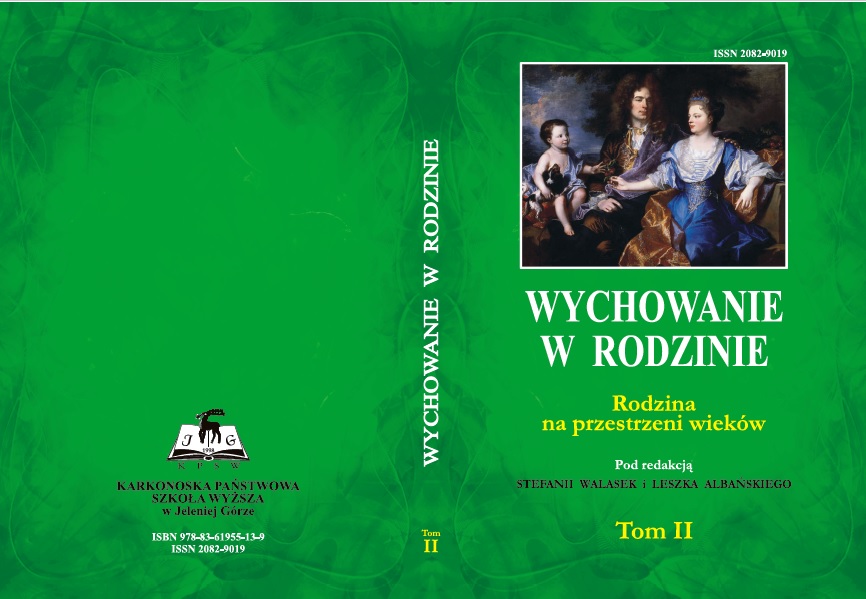Obraz polskiej rodziny w elementarzach szkolnych II Rzeczypospolitej
Presentation of the Polish family in primers used in the Second Republic of Poland (in Poland between the twoWorldWars)
Author(s): Katarzyna KochanSubject(s): History, Social Sciences, Media studies, Communication studies, Sociology, Family and social welfare
Published by: Zakład Historii Edukacji w Instytucie Pedagogiki Uniwersytetu Wrocławskiego
Keywords: early primary education; primary school; primers; learning to read and write (literacy); education; family; interwar period; interwar Polish Republic
Summary/Abstract: The interwar period was a time of great significance in the history of the Polish nation. It was characterised by immense enthusiasm because of Poland's newly regained independence, however, the country wrestled with many post-partition problems. One of them was, for instance, a lack of a cohesive administration system resulting from regional administrative differences among the Polish partitioned territories. The main task for education, also in need of adjustment to the new circumstances, was to standardise its system because of the dissimilar educational procedures available in the Second Republic. The new social, political and economic situation also required up-to- date syllabuses and corresponding textbooks. Hence,31 primers were published in the interwar period. Their reading texts dealt with various thematic fields ; they were, for example, associated with the subject of the family as being close to the children's experience and feelings.The present paper aims at comparing if, and to what extent, the portraits of families presented in the primers were adequate to real models of families in the interwar Poland.
Journal: Wychowanie w Rodzinie
- Issue Year: II/2011
- Issue No: 2
- Page Range: 141-165
- Page Count: 25
- Language: English, Polish

